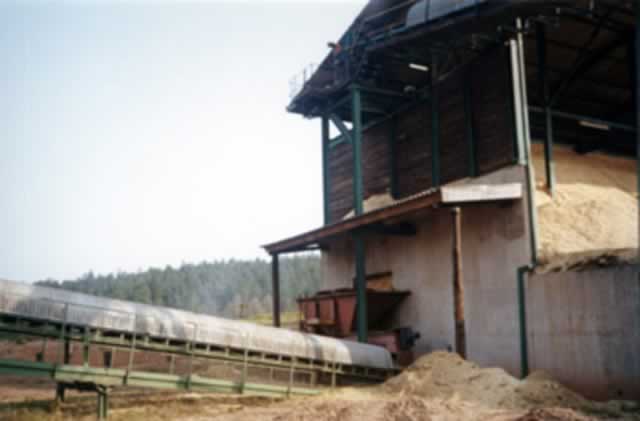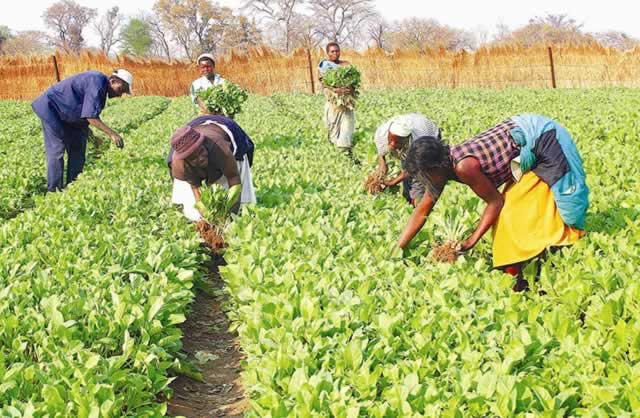Sawdust cookstoves are good news


Manicaland’s sprawling plantations provide a fertile source of sawdust. Using sawdust in efficient stoves reduces the amount of wood that would be needed for cooking or heating
Jeffrey Gogo Climate Story
A new community-centred cookstove project being piloted by Environment Africa in Mutare may help transform household energy use.
The stove utilises sawdust, as feedstock – a timber by-product that is readily available in Manicaland at little or no cost.
Sawdust burns faster and produces more heat than wood fuel, the most common energy source in rural Zimbabwe. Wood is also now being used increasingly in urban areas due to frequent electricity shortages.
For Mrs Molin Nyabadza, a 40-year-old mother of three living in the new high-density suburb of Hob House in Mutare, the sawdust stove has greatly abated existing electricity deficiencies and improved her way of life.
Where hitherto she used to fight running battles with authorities for unsanctioned wood harvesting (or wood poaching) from faraway forests, today she harvests for free and without hassle timber waste dumped as useless by the city’s industries.
Mrs Nyabadza said she uses up to 50kg of sawdust per week, which was enough for all her cooking and heating needs, at a rate of three meals daily. In the absence of “poached” woodfuel, previously she needed at least US$1 each day to purchase firewood, but it was seldom enough.
“We could not manage to prepare afternoon and evening meals for a day using only a dollar’s worth of firewood, if electricity was unavailable,” Mrs Nyabadza said.
“But with the sawdust stove we are able to cook vast amounts of food, such as beans, which generally consume a lot of energy when preparing.”
The stoves come in different sizes – one plate, two plates or industrial – costing between US$7 and US$25 each, a fair price relative to rural household incomes that may reach US$250 per year. It will be more affordable for urban households that earn more.
Stoves are manufactured from recyclable scrap metal strewn all over Mutare’s dump sites. WEGO OB Stoves and Mashambe Stoves, the two indigenous businesses contracted to produce the stoves have economically benefited.
Benefits
The project yields several socio-economic and environmental benefits, according to Mr Lawrence Nyagwande, Environment Africa area manager for Mutare.
He said the sawdust cookstoves provided households new energy options and could significantly cut electricity-related expenditures, which savings may be directed towards other necessities.
According to a survey by Environment Africa in Mutare, a family of five needed US$1 worth of firewood to prepare three meals daily, which translates to an average US$25 per month.
“If one buys a double plate sawdust stove for US$10, that person will have made a good saving considering that the stove will last for 12 months without any major repairs,” said Mr Nyagwande.
“The project is creating employment to the groups involved. There is some good returns considering that the raw material is scrap metal from dump sites.
“Environmentally, there is reduction in firewood uptake especially the indigenous trees. This will support regeneration of forests in and around Mutare thereby contributing, though on a small scale, to availability of carbon sinks.”
But in a warming world, any little local action that pushes the environmental agenda counts. It is these small actions combined that will bring about bigger wholesale environmental benefits.
We have already seen what the practice of burning wood to service household cooking and heating needs is doing countrywide. It has created a wide range of health, livelihood and environmental problems.
About 53 percent of Zimbabweans rely on woodfuel, as their main source of energy, a dependence that has caused widespread, unsustainable forest loss. More than 330 000 hectares (that’s the equivalent of the entire Zaka district) of forests are destroyed each year due to uncontrolled fires or wanton cutting.
Yet, there are growing calls for improved sustainable energy use and increased energy efficiency, as climate change bites.
The energy sector is the biggest contributor to the production of greenhouse gases such as carbon dioxide, the main driver behind global warming and climate change. In Zimbabwe, the energy sector produces almost 70 percent of all national emissions.
Efficiency
While sawdust efficiency levels are still under debate here, the product is used on a small scale to produce clean electricity in industrialised countries like Japan.
More importantly, energy efficiency at most achieves 15 to 30 percent reduction in energy use. On the other hand, reducing consumption of goods and services can achieve much more.
Sustainable energy specialist Engineer Norbert Nziramasanga said there were two perspectives to energy efficiency when using sawdust.
The first one is that sawdust is a waste material and is normally dumped at a cost to the environment. The second perspective is that using sawdust in efficient stoves reduces the amount of wood that would be needed for cooking or heating.
In that regard the household or even commercial user uses less energy to deliver the product that they wish to produce.
“Sawdust comes from processing of timber hence it has an intrinsic energy content from the growing of the trees given that plantation owners have to use energy to manage the forests,” said Eng Nziramasanga.
“Processing of the timber also relies on power equipment which add to the inherent energy in the sawdust. Therefore, using sawdust for value addition in any way sort of recovers the intrinsic energy that would otherwise be lost when the sawdust is dumped.”
However, the predominant drivers of current energy use practices in Zimbabwe at household level are cooking, heating and lighting.
The sawdust stove may prove a valuable cheap and renewable option, bridging the electricity shortages gap and optimising an abandoned feedstock, which otherwise had turned an environmental nuisance.
“Continuous surveys are taking place to comprehensively determine efficiency. But preliminary findings are pointing out to that the heat produced by sawdust stoves is stronger than that of firewood and even electricity,” said Mr Nyagwande.
There is also the question of the capacity of households to change current practices, and the needs and wants of users that might motivate or hinder such a change.
But Mr Nyagwande said the sawdust stove uptake “was very high” although more awareness still needed to be done.
“People have been used to firewood and other sources of heating thereby making it a bit challenging for the uptake of the innovation. However, the cost of firewood and proximity to sawdust dump sites has accelerated the rate of uptake,” he said.
Sawdust an unwanted form of waste in Manicaland where local authorities are failing to safely dispose it, which elevates the risk of fires that may be difficult to put out. Sawdust use minimises such risks.
However, on its own, sawdust is a pollutant hence reducing the amount that is dumped helps protect the environment.
Despite wood being a natural material, when a lot of it is dumped at once the process of decomposition produces intermediate chemicals that are damaging to water quality and to other plants.
Only when the waste is completely decomposed to compost or soil does it become useful as plant food. This is very similar to raw animal waste killing crops if applied without care.
God is faithful.
Email: [email protected]










Comments